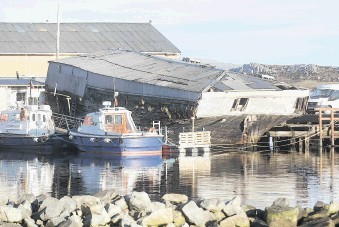
In this issue we’re majoring on the Atlantic Frontier, or rather just three parts of it . . . UK West of Shetland, the Irish sector and, several thousand miles to the south, the Falkland Islands.
Each is of huge value or potential value to the upstream oil and gas supply chain located in Britain and especially Aberdeen.
West of Shetland is arguably only now finally coming of age, with no less than five development projects in the starting gate or under way . . . Clair Ridge, Quad 204 (Schiehallion) redevelopment, Laggan-Tormore, Rosebank and Solan. Add to that the gradual ramping up of exploration and it is clear that WoS is no longer the UKCS Cinderella.
Indeed, the UK Atlantic Frontier is becoming of massive strategic importance to Great Britain, despite Treasury parsimony. It is vital to the Scottish National Party as it seeks to break Scotland free of the Union.
Turning to Ireland, again the story is about a province that has been slow to take off. And for years it was a one-trick hydrocarbons pony with just one commercial development . . . the famous Kinsale Head gasfields complex.
By comparison to the pitiful Irish track record the drilling effort WoS has been intensive. But there are now clear signs of momentum building; to seek out the hydrocarbon prizes that apparently lurk beneath the Atlantic seafloor out to the west of Ireland.
Should ExxonMobil make a gas strike with the well that it is about to start drilling on the massive Dunquin prospect, then that could prove the game-changer for Ireland’s sick economy and quite possibly the balance of gas resources power within the EU.
Turning to the Falklands, during October I visited the islands for the first time.
My interest reaches back to when I was a teenager and furiously gobbling books on naval warfare, salvage and the last days of European commercial sail.
I even still have promotional literature dating from 1970 about the ultimately successful UK bid to rescue IK Brunel’s famous steamship . . . the world’s first iron-built, propeller-driven transatlantic liner . . . from the Falklands where it had served as a wool store for many years before being left to decay in Sparrow Cove and later recovered.
Call me an anorak if you like.
Like so many Brits I followed the Falklands War with grim fascination, though the scale of the effort made to wrest the islands back from Argentina did not hit me until I stood at the cenotaph in Stanley and read the names of those who died in naval and military actions.
Indeed it shook me just how many ships were involved too, let alone any other assets, including the famous Harrier jump jets that we no longer have.
Post Falklands War, as the effort was made to crank up the pace of the FI’s tiny economy, I tracked the development of the fishery licensing scheme and the hugely successful squid fisheries that have since played a huge role in generating wealth for the islands.
I was lined up to travel to the Falklands in the early 1990s, but that trip became a victim of circumstances beyond my control.
That did not prevent me from sustaining my intense interest, which reached a new level with the first exploration drilling campaign in the late 1990s and which tantalised with hints of oil and gas.
But the oil price slump of the late 1990s put paid to further thoughts of exploration until the mid-1990s when the current cadre of small exploration and production companies started planning and raising the money needed to get a rig back into Falklands waters for another campaign.
Thus the foundations were by degrees laid, a contractor secured and a rig hired. AGR was to master out of Aberdeen, a hugely successful campaign with the Ocean Guardian that led to the successful discovery and appraisal of Sea Lion, then operated by Rockhopper but which is now controlled by Premier Oil via a farm-in deal.
AGR was also to play a pivotal role in the deployment and support of a second rig, the deepwater unit Leiv Eiriksson, which successfully drilled Darwin (gas-condensate), probed none too successfully the Stebbing prospect (both Borders & Southern), executed a cleverly engineered well on the Loligo prospect that revealed multiple gas-bearing horizons for Falklands Oil & Gas and now farm-in partners Edison and Noble to ponder, plus the Scotia-1 well, the results for which are pending at the time of writing.
Sea Lion is in the early stages of development and due onstream in 2017. Just this field will transform the Falklands economically for the second time in three decades.
However, I’d be surprised if, by 2016, there aren’t two further candidate developments . . . Darwin and one other.
The collective impacts on a population of barely 3,000 of whom 75% live in Stanley will be dramatic, no matter how carefully managed. One has to hope that Falklands folk keep an iron grip on what is already happening. A roller-coaster ride is promised.